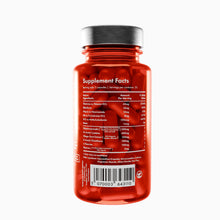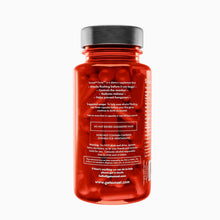Asian Flush: The Surprising Connection to Anxiety and Depression

Share this article
Copy and paste this link
If you've ever experienced Asian flush after drinking alcohol, you're not alone. This common reaction, characterised by facial redness and discomfort, is more than just a social embarrassment. A bunch of studies have delved into the deeper implications of this condition, linking it to mental health issues such as anxiety and depression. Let's explore the science behind Asian flush and how it is linked to mental disorders such as anxiety and depression.
The Science Behind Asian Flush
The root cause of Asian flush lies in the ALDH2 gene. This gene encodes an enzyme responsible for breaking down acetaldehyde, a toxic byproduct of alcohol metabolism. However, a common variant of the ALDH2 gene, prevalent in East Asian populations, results in a much less effective enzyme. This inefficiency leads to the accumulation of acetaldehyde, causing the flushing reaction and other unpleasant symptoms.
Mental Health Implications of Asian Flush
Variations in the ALDH2 gene do more than just cause facial redness, they can also have significant effects on mental health. Here are some mechanisms linking ALDH2 variants to anxiety and depression:
Acetaldehyde Toxicity
As mentioned above, people with Asian flush have a hard time breaking down acetaldehyde when they drink alcohol. Acetaldehyde is very reactive and can cause stress and damage to cells, which can affect how the brain works.
A study by Gao et al. (2022) in the International Journal of Molecular Sciences shows how the body’s inability to process acetaldehyde leads to oxidative stress.
This is relevant in light of a study by Tsermpini et al. (2022) which explores how alcohol-induced oxidative stress affects mental health. The researchers highlighted that:
"Chronic alcohol intake and oxidative stress also influence neurotransmitters and affect behaviour and the severity of concurrent mental disorders such as PTSD, anxiety, and depression."
This connection is particularly relevant for individuals with Asian flush, as their bodies accumulate more acetaldehyde, increasing oxidative stress and its harmful effects on the brain.
Neurotransmitter Imbalance
In a 2007 Chinese study, Researchers from the Department of Pharmacology at Shenyang Pharmaceutical University investigated how acetaldehyde affects brain cells called astrocytes.
They found that acetaldehyde reduces the ability of these cells to take up glutamate, an important neurotransmitter. This happens because acetaldehyde causes oxidative stress and lowers the levels of a specific transporter protein needed for glutamate uptake. This reduction in glutamate uptake can lead to brain cell damage and contribute to neurodegenerative diseases.
Studies using brain imaging have found that people with depression often have lower levels of glutamate in parts of the brain like the prefrontal cortex and hippocampus. This low glutamate is linked to depression symptoms and might be caused by issues with how glutamate is cycled and used in the brain, leading to problems with brain cell connections and function.
Disrupted Stress Response System
Stress caused by acetaldehyde can disrupt the HPA axis, which controls how we respond to stress and is linked to anxiety and depression.
A comprehensive study from 2001 by researchers at the University of Bristol in the UK, with contributions from Kagawa Medical University in Japan, looked at how acetaldehyde affects the stress response system (HPA axis) in rats.
"We have demonstrated that high concentrations of acetaldehyde generated by cyanamide, a potent inhibitor of ALDH, combined with a low dose of ethanol, resulted in increased plasma corticosterone concentrations and significant increases in both CRF mRNA and AVP mRNA in the PVN and POMC mRNA in the anterior pituitary."
The keyword in that word salad is corticosterone, which is a stress hormone. The researchers found that high concentrations of acetaldehyde increased this stress hormone along with a whole bunch of stress-related genes.
Whilst this study was conducted on rats, it still provides some evidence that acetaldehyde has the potential to disrupt the HPA axis and potentially contribute to anxiety and depression.
Behavioural Factors
Individuals with the ALDH2 mutation often experience adverse reactions to alcohol, which can lead to social anxiety due to fear of embarrassment or physical discomfort in social situations.
Anxiety expert Jim Folk talks about the concept of avoidance behaviours in his article titled Avoidance Anxiety. According to Jim:
"Avoidance anxiety involves staying away from specific situations, objects, thoughts, or feelings in an attempt to sidestep the feelings of fear or perceived threats because of the anticipated discomfort"
In its article "Alcohol Flush Reaction: Does Drinking Alcohol Make Your Face Red?", the NIAAA explains that people with alcohol flush reaction might experience various symptoms such as flushing, nausea, and palpitations, making social drinking uncomfortable and potentially leading to avoidance behaviours.
This would come as no surprise to anyone with Asian flush, who sometimes avoid going out altogether to avoid the stress and embarrassment of experiencing their symptoms in public.
Practical Advice for Managing Asian Flush and Its Implications
1. Recognise and Accept Your Condition
Understanding that Asian flush is a genetic condition can help you accept it as part of who you are. Knowing the science behind it can also help you explain it to others and reduce any stigma surrounding it.
2. Plan Ahead
If you know you'll be attending an event where alcohol is present, it's a good idea to plan ahead. Consider eating a meal before drinking, as food can help slow the absorption of alcohol and reduce its impact. You can also choose drinks with lower alcohol content.
3. Choose Alternatives
Look for non-alcoholic alternatives when socialising. Many bars and restaurants offer mocktails, non-alcoholic beers, and other creative beverages that don't make it look too obvious that you're not drinking alcohol. Some people like to suggest social activities that don’t revolve around alcohol, like coffee meet-ups, outdoor activities, or cultural events.
4. Educate Your Social Circle
Helping your friends and work colleagues understand Asian flush can sometimes foster a supportive environment. They may be more likely to be considerate and inclusive if they understand the condition and its effects.
5. Monitor Your Mental Health
Be mindful of your mental health. If you notice signs of anxiety or depression, consider seeking professional help. Therapists and counsellors can provide strategies to manage these feelings and improve your overall well-being.
6. Support Groups and Communities
Consider joining support groups or online communities where you can share your experiences and learn from others who face similar challenges. These groups can provide emotional support and practical advice from people who understand what you're going through.
7. Limit or Avoid Alcohol
For some, the best option might be to limit or completely avoid alcohol. This can prevent the unpleasant symptoms of Asian flush and reduce the risk of related mental health issues.
Conclusion
While Asian flush presents significant challenges, both physically and socially, understanding its genetic roots and associated mental health implications can empower those affected to take proactive steps. By recognising the condition, planning ahead, and educating others, you can navigate social interactions more comfortably and maintain better mental health.
Enjoy drinking again and get Sunset Alcohol Flush Support for
33% off while stocks last!
What’s inside?
We use a pharmacist-formulated blend of Glutathione, Dihydromyricetin, Cysteine, L-Theanine, & B Vitamins to stop alcohol flushing before it can begin.
Learn more
94% of people who try Sunset are satisfied with the results.











